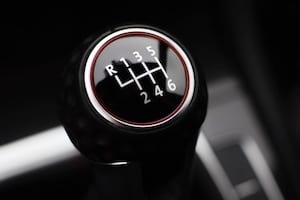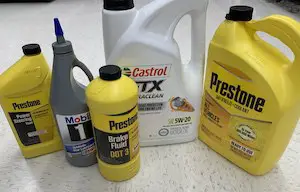Car starting and battery issues can be frustrating, leave you stranded away from home, and can be expensive. It is possible that the alternator that charges the battery has gone bad. If your alternator is the root of the problem, then is it possible to keep driving your car to get it home, or to the shop? And can it cause any damage to your car?
Can I drive with a bad alternator and will it cause any damage?
It is possible to drive with a bad alternator, although the car will only stay running as long as the battery is charged. Once the battery runs out of charge, the car will shut off. No damage is caused when driving with a bad alternator although the car will only run until the car runs out of stored power.
Driving with a Bad Alternator
A bad alternator ranges between not charging at all to charging just less than what is required to maintain the battery. Technically, a bad alternator can provide enough power to keep the car running, just not enough to charge the battery for an easy car start.
Regardless of the condition of the alternator, if it is not providing 13.5-14.5 volts then the alternator needs to be replaced or repaired.
This does not always happen at a convenient time (it never does actually) or a convenient location, so you may be wondering if you can make the drive home or to the mechanic with a bad alternator.
How far can I continue to drive with a bad alternator?
With a faulty alternator and a fully charged battery, you should expect about 30 minutes of operating capacity or about 30 miles. Most cars draw 20-30 Amps while operating and have a battery capacity equivalent of about 50 Amp Hours. But car batteries are not deep cycle batteries, so they will not continue to power the car beyond around 50% capacity.
It will be best to charge the battery to its’ full capacity before attempting to drive anywhere with a a faulty alternator, and driving with less things to power is best. Turn off headlights, the radio, the air conditioning and this will maximize the life you get out of one battery charge.

If the alternator is having trouble, then certainly so is the battery since the purpose of the alternator is to charge the battery.
Can I drive the car with a dead battery?
If the battery is fully dead, then the car will not be drivable. If the battery is however only mostly dead, then you CAN drive the car and it will continue to power the car indefinitely although may not hold a charge preventing you from shutting off the car and being able to start it again.
To start the car, the car battery must be able to hold a full charge because of the large amount of current required for the starter.
The problem with a MOSTLY dead battery is that it won’t charge up, so if you stop and turn off the car you most likely wont be able to start it again.
Jump Starting with a Bad Alternator
If you have determined that you have a bad alternator, your battery continues to die and won’t hold a charge even after you drive it. If the battery is not sufficiently charged, then there is not enough juice to start the car so you need a jump start.
Is it dangerous to jumpstart a car with a bad alternator?
Jumpstarting a car with a faulty alternator does not cause damage or present a danger to you. The most difficult thing of jumpstarting a car with a bad alternator is that it may not charge the dead battery sufficiently to keep the car running. If the car continues to die, it is not safe to jumpstart the battery for a prolonged period of time, and the car must be towed.
Causes of a Bad Alternator
Because an alternator is difficult to diagnose by symptoms, and expensive to repair, it is extremely beneficial to know why the old one died so you can prevent it from happening in the future.
What can kill an alternator?
An alternator left to charge a dead battery continuously can result in a dead alternator. Overworking the alternator is the most common reason for a failed alternator. Other reasons may be heat, poor wire connections, water, or a bad voltage regulator.
Heat
An alternator works hard to produce the power to charge a battery that is low on charge and has to work less to keep a battery properly maintained. When the alternator overworks, it heats up and causes significant wear on the components in the alternator.
A dead battery is the most common cause of an overworked and overheated alternator.
Replace the battery when it is old and you will have to replace your alternator much less frequently.
An overheated alternator is the
Poor Wire Connections
Loose battery connections can cause an alternator to run when it doesn’t need to. It will not allow the alternator to charge the battery as efficiently as it would with a tight, clean electrical connection.
Undersized wires cause the same issued. Undersized wires cause unecessary resistance lowering the charge capacity of the alternator causing it to work harder than it normally would.
An alternator that works harder than normal will wear out faster.
Water
It’s embarrassing, but I have seen it happen several times..
Failure to cover the alternator with plastic or other waterproofing when cleaning the engine bay can result in a failed alternator.
Wrap the alternator in saran wrap, or a grocery bag with duct tape, or a trash bag tied securely around the alternator.
Once you are done cleaning the engine bay, another way to ensure no water damage is done to the alternator is to leave the car to dry for 24 hours or as long as possible after cleaning it with water.
Pulley
The pulley is another common point of failure of an alternator and the pulley will frequently fail on the alternator if the alternator is misaligned with the serpentine belt. A misaligned belt will pull on the pulley in a direction that can cause wear on the pulley bearings.
Realign the alternator with a different mounting bracket or with a double pulley that will allow you to loo the serpentine belt in a more in-line position.
Voltage Regulator
The voltage regulator is what controls the voltage coming from the alternator. It allows the alternator to produce more power when it is needed and less when the car demands less.
So when the lights are all on and the wipers and radio are going and the battery is low, the alternator will crank out the amount of power to keep up with the car. It is this change in power that is controlled by the voltage regulator.
When a voltage regulator goes bad, it can cause the alternator to be overworking and wear out sooner. A faulty voltage regulator can result in your alternator working at full power all the time even when it doesn’t need to. This is a major reason for early alternator failure.
If you have worn out several alternators fairly quickly, then test your voltage regulator.


